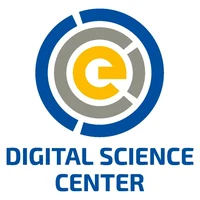For more Digital Accessibility at the University of Bonn
The project applies insights gained from the participation of the University of Bonn in the DH.NRW project "Competence Center for Digital Accessibility" to the structures of the University of Bonn. Besides the monitoring of digital barriers, so-called 'quick wins' have been defined, which are goals that can be implemented in the short-term and in a resource-efficient manner. These will be gradually implemented in the project and will contribute to improved digital accessibility at the University of Bonn in the long term. Upon completion of the project, a concept for long-term monitoring of digital accessibility at the University of Bonn will be available.
What does Digital Accessibility mean?
According to German law, digital accessibility means that information technology applications must be designed in such a way that they can be used by all people with and without disabilities. The accessibility requirements are defined by law (by the BITV, BGG and BFSG), as well as by guidelines such as the European Standard (EN) 301 549 and the Web Content Accessibility Guidelines (WCAG).
According to this, digital applications must be designed according to the following principles for sufficient accessibility:
Perceivable
Content is presented in such a way that it can be perceived by different groups of users. For purely visual or auditory content, alternatives are offered that make the content accessible via a different sense.
Operable
Digital applications must be designed in such a way that all content and functionalities can be accessed and used in different ways by different groups of users.
Understandable
All content on the website must be easy to understand. It should be easy for all users to recognise how to use the website.
Robust
All elements and content on the website must be designed in such a way that they can be adapted to the needs of users with the aid of assistive technologies.
What is the project "Quick Wins for Digital Accessibility" about?
The ‘Quick Wins for Digital Accessibility’ project is developing measures and strategies for greater digital accessibility in IT applications at the University of Bonn. To this end, the current state of accessibility is to be determined and documented using automated testing software and self-testing. Individual work packages (‘Quick Wins’) have been defined to implement the objectives. These are to be implemented within one year (by April 2026).

Participating institutions
In addition to the Equal Opportunity and Diversity Unit (project management) and the Digital Science Centre (project coordination), the following institutions are also involved:
- University IT and Data Center (HRZ)
- Bonn Center for Higher Education (BZH)
- Department 2 - IT and Computing Services
- Division 8 - University Communications
The DiCe Services & Infrastructure committee acts as the steering group.
Prof. Dr. Adrian Hermann provided technical advice for the project.
Four defined Quick Wins
The following quick wins have been defined and are being implemented step by step.
01.
Feedback mechanism
A feedback mechanism is being designed and implemented to enable users to report digital barriers. This function has been accessible from all university websites via a link in the footer (next to data protection and legal notice) since 8 October 2025. Users can report digital barriers anonymously or by providing their contact details via a contact form and, if necessary, request information or content in an accessible format.
The requests will be processed by the Equal Opportunity and Diversity Unit or forwarded to the department responsible for the relevant page.
Goals & benefits
- More targeted removal of existing digital barriers through user feedback
- Sustainable monitoring and derivation of measures for the future
02.
Checklist and guidelines for editors
A first step towards creating a barrier-free website is to raise awareness among editors so that they can create new pages that are as accessible as possible from the start. Based on the Web Content Accessibility Guidelines (WCAG) and existing guidelines, key criteria were identified that should be taken into account when working with Plone CMS on the University of Bonn websites.
Two documents were then created based on the criteria identified: a concise and pragmatic checklist and a detailed guide with explanations and examples for each criterion. Both documents will be published internally at the university and are intended to help editors design the content of IT applications and documents to be accessible.
Goals & benefits
- Large-scale improvement of accessibility by avoiding editorial barriers
- Raising awareness of the issue among editors
- Side effect: improvement of website quality
03.
Model accessibility statement
In addition to actively removing barriers, it is important to make the current status of accessibility transparent and to communicate any remaining barriers and the measures taken to resolve them. An accessibility statement can therefore be found under the Accessibility button in the footer (Quick Win 1). As part of the project, the existing accessibility statement (automatically generated by Plone) will be updated and any remaining barriers will be documented.
The list of remaining barriers will be determined with the help of self-tests and the use of automated testing software.
Goals & benefits
- Transparent communication of the current status of accessibility and corresponding measures
- Implementation of manual and automated testing procedures on the pages of the Equal Opportunity and Diversity Unit and examination of transferability to other University of Bonn pages
- Development of a model accessibility statement
04.
Templates and click-through guides
The fourth quick win involves considering how barriers created by non-accessible PDF files can be avoided. Existing guidelines should be used to create templates and click-through guides for designing documents that are as accessible as possible. Existing templates, for example for PowerPoint presentations, should be checked and revised in terms of accessibility.
Due to the complexity of this project, it is conceivable that a follow-up project may be derived from it.
Goals & benefits
- Improvement of the accessibility of published documents
- Easier implementation of accessible materials
Contact
Julia Lindenberg (she/her)
Dechenstraße 3-11
53115 Bonn
Yasha Müller (he/him)
Dechenstraße 3-11
53115 Bonn


